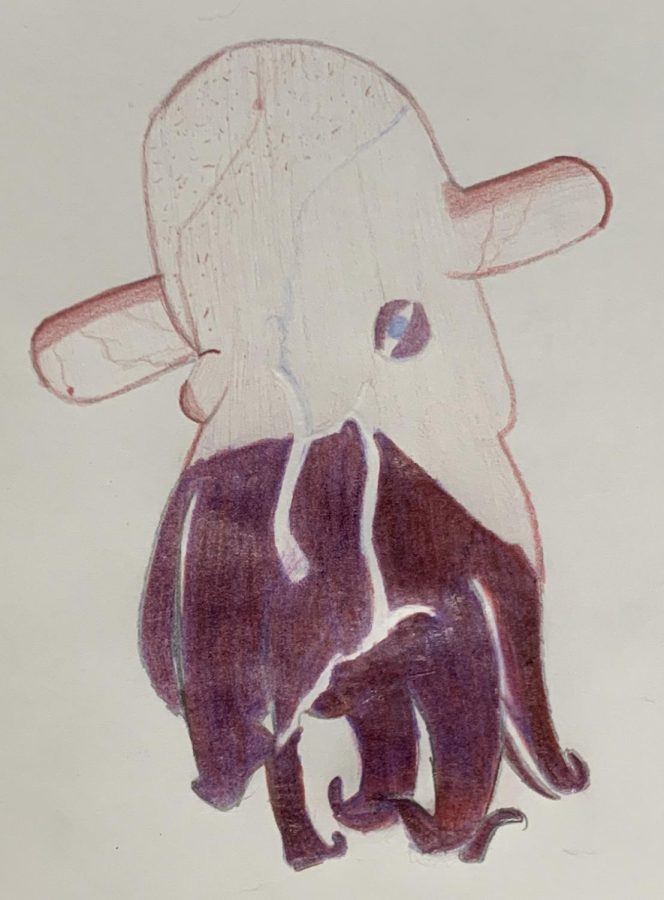Deep Sea Organisms: Emperor Dumbo
A drawing depicting the first Emperor Dumbo Octopus discovered in 2016.
In July 2016, a new species nicknamed “Emperor Dumbo” was discovered. On a research boat in the North Pacific Ocean, Alexander Ziegler, an evolutionary biologist, pulled up the metal fishing net and found a Dumbo Octopus tangled in it. Knowing that Dumbo Octopi don’t live in that area of the Pacific Ocean, Ziegler figured that he had discovered something new. After taking measurements and samples, Ziegler secured the octopus in formaldehyde and returned to his lab.
The Emperor Dumbo is a small species of octopus that lives in the Emperor mountains off the coast of Japan. Their distinctive feature is their fins, as they resemble the Disney character Dumbo’s ears, which is where these octopi get their name. Another distinctive feature is the webbing of their tentacles, as it resembles an umbrella. They are differentiated from other Dumbo Octopi by the length of their tentacles and the number of suckers on each tentacle.
Dumbo Octopi live on the seafloor, as deep as 23,000 feet. So far, it is the only known species of octopus that lives at that depth. They survive by feeding on shrimp-like crustaceans and worms that are located on the seafloor, which they trap with their tentacles. At those depths there aren’t a lot of nutrients, meaning there aren’t many fast-moving predators in their environment. Without the danger of fast-moving predators being around them, Dumbo Octopi lost their ability to release ink during evolution.
The Dumbo Octopus discovery in 2016 was a key piece in the revolutionary advances in taxonomy, the science of describing and classifying organisms. When Ziegler got back to the lab, he put the octopus in an MRI and used a CT scan to examine it, which was entirely different from what was typically done, as usually, a specimen has to be dissected to examine its internal structure. Opening a specimen, however, can compromise its internal structure, resulting in misleading information. When using a CT scan, the internal structure of a specimen isn’t compromised, and they can get better results. In the years following the identification of the Dumbo Octopus, CT scans became popular with those who suspected they had discovered a new species and those who possessed rare specimens. Without Ziegler’s idea to use a CT scan to examine the Dumbo Octopus, scientists wouldn’t have been able to discover as much information about rare species.
The discovery of the Emperor Dumbo species has led to tremendous advancements and new scientific knowledge. Every year, scientists discover a variety of never before seen ocean species and, with Ziegler’s intuitive mind, doors have been opened which allow new discoveries about those species. So while the Emperor Dumbo species themselves aren’t a dramatic discovery, every piece of knowledge humans receive pushes our understanding of the world further.
Thanks for reading The Falconer. We're happy to provide you with award-winning student journalism since 1963, free from bias, conflicts of interest, and paywalls. We're able to continue with the generous support of our local community. If you're able, please consider making a donation. Any amount is incredibly helpful and allows us to pursue new and exciting opportunities.
Hey! My name is Madison Fishback and I am a freshman. Some of my hobbies include reading, writing short stories with friends, and photography. Outside...





